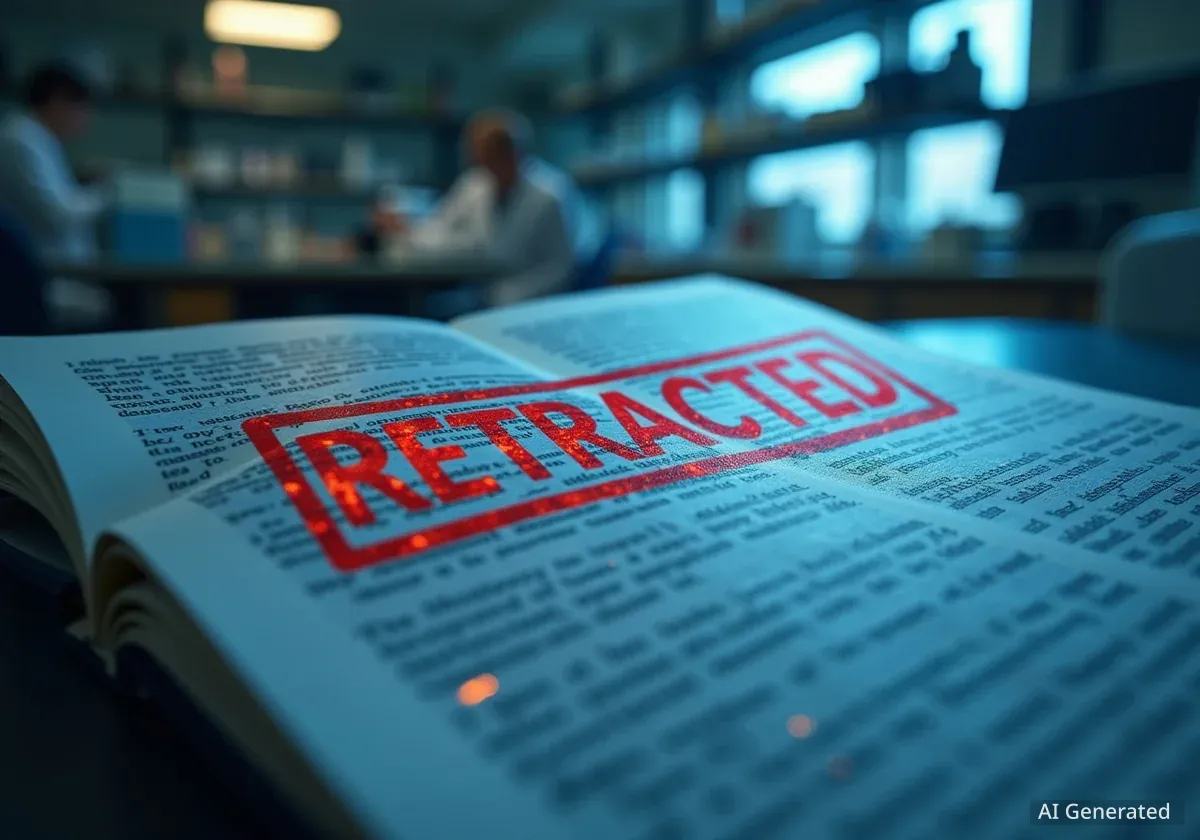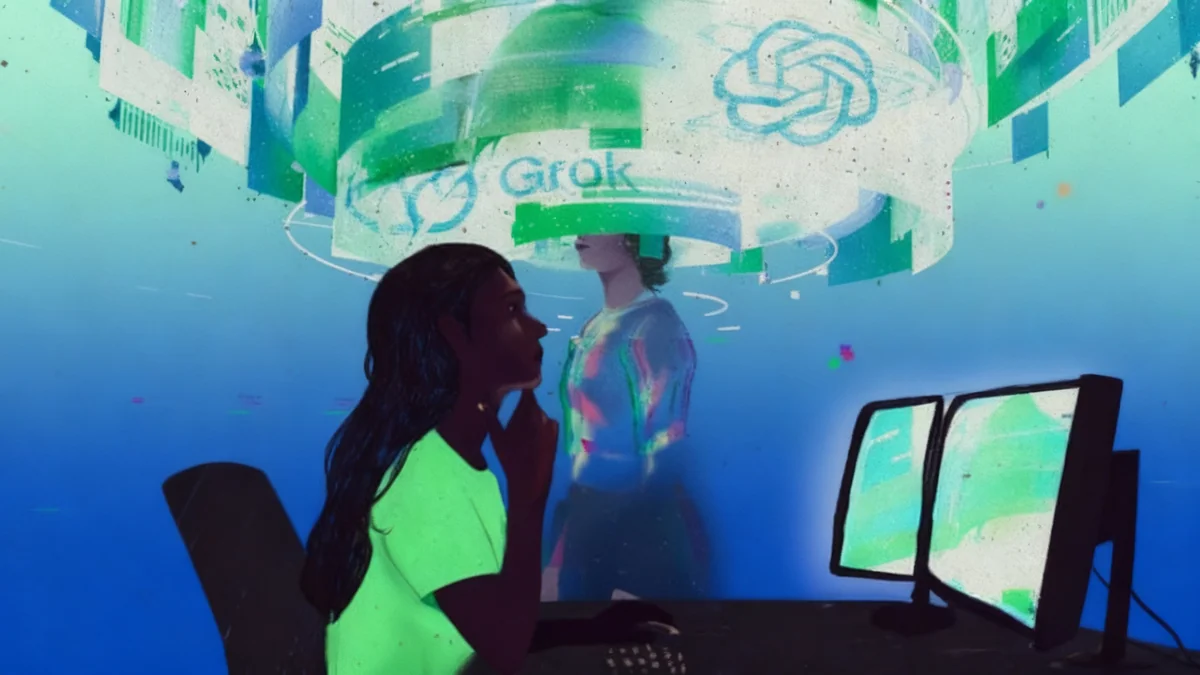The world of scientific publishing is facing a complex set of challenges, from a surge in research misconduct to the disruptive influence of artificial intelligence. Recent events highlight growing concerns over the integrity of academic work, with experts describing the current system as a "hot mess" plagued by fake data, fraudulent papers, and immense pressure on researchers to publish.
These issues are compounded by new technologies, such as AI that can generate microscope images indistinguishable from real ones, raising fundamental questions about the verification of scientific findings. As retractions of scientific papers surpass 60,000, the academic community is grappling with how to restore trust and ensure the reliability of research.
Key Takeaways
- Artificial intelligence can now create fake scientific images, such as microscopy photos, that are virtually undetectable, posing a significant threat to data integrity.
- High-profile cases of misconduct, including image manipulation and plagiarism, are leading to a record number of paper retractions, with over 60,000 now cataloged in the Retraction Watch Database.
- Experts like Ivan Oransky have described the academic publishing industry as a "hot mess," citing issues of fraud, profit motives, and systemic pressures on scientists.
- Studies show that female faculty members often publish fewer papers and in lower-impact journals, highlighting systemic inequities that contribute to the high-pressure environment.
- Social media is being explored as a potential early warning system for identifying problematic research before official retraction.
A System Under Pressure
The state of scientific publishing has come under intense scrutiny, with growing criticism directed at its core processes and incentives. The pressure to publish frequently in high-impact journals has created an environment where misconduct can thrive.
Ivan Oransky, a prominent voice in the field of research integrity, recently described the academic publishing landscape as a "hot mess." This sentiment is echoed in discussions across the scientific community, including podcasts that examine the intersection of fraud, AI-generated content, and the substantial profits of publishing houses.
The "Publish or Perish" Culture
The phrase "publish or perish" refers to the intense pressure on academics to continuously publish work to advance their careers and secure funding. This can lead some researchers to cut corners, manipulate data, or engage in unethical publishing practices to meet institutional demands.
This high-pressure environment can have tangible consequences. One researcher noted, "Even high-quality work feels inadequate when others produce in greater numbers." This constant demand for quantity over quality can undermine the scientific process, which often requires slow, meticulous work.
Disparities in Academic Output
Systemic issues also contribute to the pressure. A recent study of biology faculty at universities in the United States revealed significant gender disparities. According to the findings, female faculty members tend to produce fewer publications annually, publish in journals with lower impact factors, and receive fewer citations than their male counterparts. These disparities highlight underlying inequities that can affect career progression and recognition within the scientific community.
The Double-Edged Sword of Artificial Intelligence
Artificial intelligence is rapidly transforming science, but its capabilities also introduce new and formidable challenges to research integrity. One of the most alarming developments is the ability of AI to generate fraudulent data that is nearly impossible to distinguish from authentic results.
A recent report demonstrated that AI can create fake microscopy images that experts cannot identify as artificial. This capability poses a direct threat to fields that rely on visual evidence, as fabricated images could be used to support false scientific claims.
AI in Social Science
The influence of AI extends beyond image generation. A study found that using AI-generated 'participants' in social science experiments can significantly skew results. These artificial subjects can lead researchers to draw incorrect conclusions about human behavior, compromising the validity of their findings.
However, some researchers believe AI could also be part of the solution. In a correspondence published in Nature, professors argued that AI tools could potentially reduce the appeal of predatory journals. These journals often exploit the pressure to publish by offering easy publication for a fee, without rigorous peer review. AI could help researchers identify and avoid such outlets, or even assist in the peer review process itself.
A Rising Tide of Retractions and Misconduct
The tangible result of these systemic pressures and new technological threats is a noticeable increase in retractions and high-profile cases of scientific misconduct. The Retraction Watch Database, a comprehensive collection of retracted papers, now contains more than 60,000 entries.
- Duke University: Scientists at the institution lost eight papers due to allegations of image manipulation.
- Paper Mills: A former student involved in running a paper mill, which produces fraudulent manuscripts for sale, has now accumulated 11 retractions.
- Reviewer Theft: Publisher Wiley retracted a study that was stolen by a peer reviewer, who then published it under their own name.
- Citation Fraud: A professor accused of plagiarism and sexual harassment was reported to have removed 7,170 "irregular" citations from his curriculum vitae.
Some retractions happen quickly. In one instance, a journal issued a retraction in less than 24 hours for what was described as an "inadvertent mistake." In other cases, the process is far more complex and contentious. A professor who was fired after an investigation into misconduct at an equine lab has filed a lawsuit against the university and others involved.
"The entire scientific paper was not copy-pasted (but ‘only’ 90 or so pages)."
This quote illustrates how definitions of misconduct can vary and how accountability can be difficult to enforce, even in clear-cut cases of plagiarism.
Searching for Solutions and Early Warnings
With trust in the scientific record at stake, researchers and integrity experts are exploring new ways to identify and prevent misconduct. One emerging area of interest is the role of social media as a potential bellwether for problematic research.
A study titled "Can social media provide early warning of retraction?" is investigating whether online discussions on platforms like X (formerly Twitter) and public forums can flag suspect papers before they are officially retracted by journals. This approach could accelerate the process of correcting the scientific record.
The Persistence of Bad Science
Even after a paper is retracted, its influence can linger. Research on Wikipedia found that retracted papers often persist on the platform without proper notation, continuing to misinform the public. Similarly, another study examined whether journalists update their news coverage after a scientific study they reported on is retracted, highlighting the challenge of correcting misinformation once it has spread.
Proposals for systemic change are also being discussed. One researcher suggested adding a "speculation box" to scientific papers. This section would allow authors to share imaginative interpretations or ambitious ideas for future work without presenting them as established facts, potentially fostering more transparent and creative scientific discourse.
Ultimately, addressing the integrity crisis requires a multi-faceted approach, from reforming the incentive structures in academia to leveraging technology responsibly and fostering a culture of transparency and accountability.





